Reviews
Peter Greenaway
UK/France, 1991
Credits
Review by Rumsey Taylor
Posted on 15 January 2010
Source bootleg DVD
Categories Peter Greenaway, Sacha Vierny, Michael Nyman, Ben van Os and Jan Roelfs
In the years that have passed since the release of The Cook, the Thief, His Wife & Her Lover, Peter Greenaway has made eight full-length features, a mere four of which have secured distribution in the US, and none of which, save for possibly The Pillow Book in 1996, have endowed him with anything close to the critical or popular renown that greeted his 1989 film.
The tenure of Greenaway’s dormancy isn’t exactly unjustified. His films are quite determinedly challenging, complementing or supplanting narratives altogether with whimsical meta-exercises (the literal countdown in Drowning by Numbers), blasts of aestheticized violence (The Cook, the Thief, His Wife & Her Lover; The Baby of Mâcon), or layers of images and text superimposed atop another filmed sequence (Prospero’s Books, 8 ½ Women). His films are less films in a traditional sense than they are provocations intent to reevaluate of the very nature of cinema.
Greenaway began his career as an experimental filmmaker, and he has never fully eschewed his roots. His films have become larger in scale, but many of them are as characteristically outré as his library of avant-garde short films. 8 ½ Women is perhaps the most telling example of this in how it replaces entire dialogical exchanges with pages of the actual screenplay shown in close-up. It’s evident that Greenaway has become the product of his own elitist, uncompromising iconoclastic tendencies. He has exhausted his audience.
These tendencies are first pronounced in his 1991 film, Prospero’s Books. It is, however, conceivably his most impressive film, so densely robust in its visuals and literary citations that it finds him in as assured a form as in any other film he’s made. This is due in no small part to the contributions his stock of collaborators: Michael Nyman’s pulsating score (it would be his last for Greenaway); Sacha Vierny’s unconditionally behemoth tracking shots; and especially the production design of Jan Roelfs and Ben van Os. (This is not to mention John Geilgud in the title role; this particular role was one he sought for years, courting filmmakers as various as Akira Kurosawa to Orson Welles to, well, Peter Greenaway.) The sequence that houses the title credits - a single tracking shot suspended by Nyman’s score and filled with dozens upon dozens of peripheral characters - is debatably the pièce de résistance of Greenaway’s career thus far.
And yet the film, an adaptation of Shakespeare’s final play, The Tempest, is unfortunately mystified, transitioning from one majestic scene to the next with little perceptible stock in narrative. Shakespeare’s prose, it goes without saying, is retained verbatim, but gone is any real context. Shakespeare’s Prospero is a magician, exiled by his brother to an island with his daughter, Miranda, and selections from his mighty library. Greenaway’s adaptation confounds everything but Prospero’s library, which, peculiarly and yet unironically, is the focus of the film. Throughout, each entry in a collection of exactly twenty-four books is catalogued in exacting fashion, in superimposition within the frame. Each is magically animated as well, a multiplication of the film’s various layers of information.
From the opening forward, the film remains relentlessly, coercively visual, as impenetrably dense as an encyclopedia of literary and aesthetic allusions. Prospero’s Books is an astonishing work, in this sense. But it is not precisely the cinema that astonishes; rather, it is the collage of scenario, superimposition and meta text, and this, for better or worse, is unique to no other body of work.
More Peter Greenaway, Sacha Vierny, Michael Nyman, Ben van Os and Jan Roelfs
-
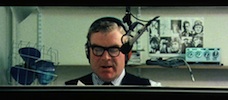
The Falls
1980 -
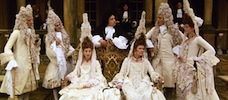
The Draughtsman’s Contract
1982 -

A Zed & Two Noughts
1985 -
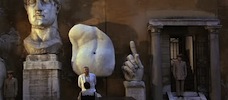
The Belly of an Architect
1987 -
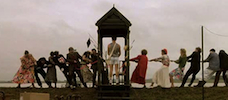
Drowning by Numbers
1988 -
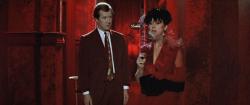
The Cook, the Thief, His Wife & Her Lover
1989 -
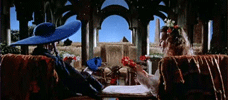
Prospero’s Books
1991 -
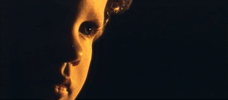
The Baby of Mâcon
1993
We don’t do comments anymore, but you may contact us here or find us on Twitter or Facebook.



